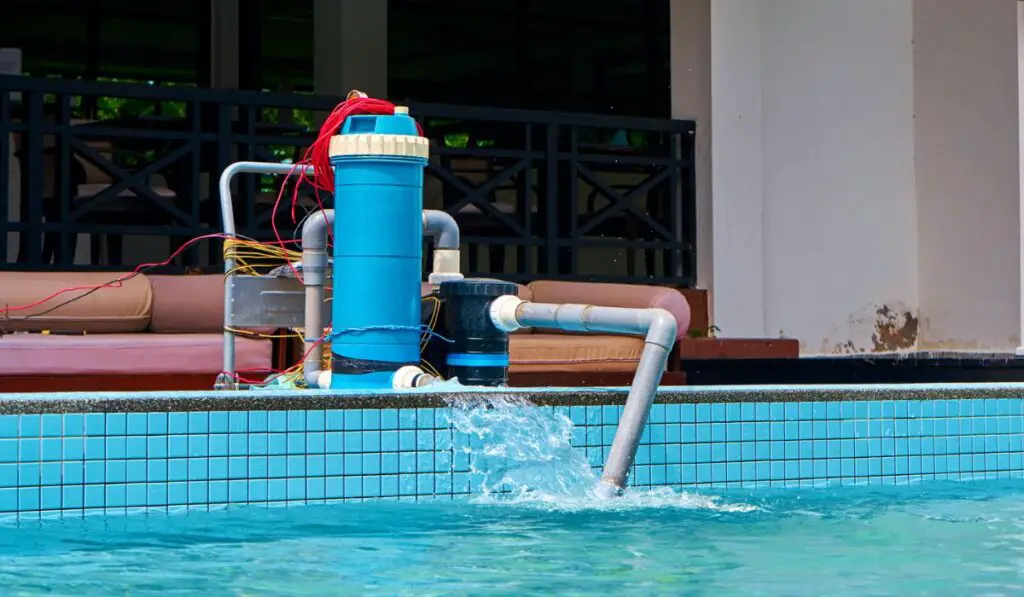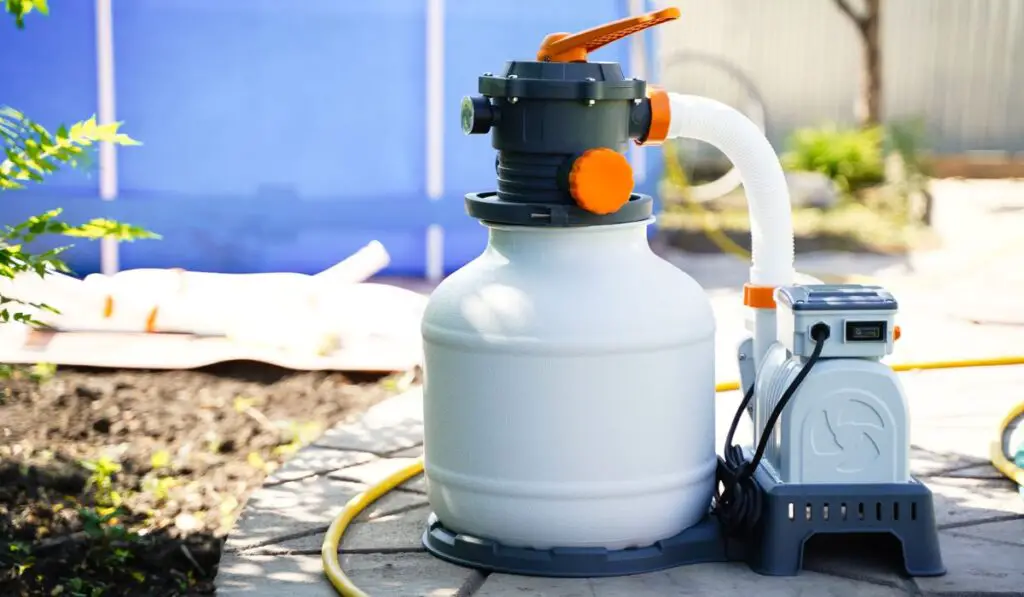Everyone likes a clean pool, which is why running your pump is essential. But to be blunt, knowing when to run your pump is just as important as running it in the first place. So, how long should you run your pool pump, and how often should you do so?
You should run your pool pump at least once daily for a complete turnover. How long you run it for each turnover depends on your pool’s volume and the pump’s flow rate. For example, if the pool volume is 20,000 gallons and the flow rate is 2500 GPH, each turnover takes 8 hours.
All you need to keep the shimmer and shine of your pool is to let the water run through the pump filter at least once a day. Now let’s dive in, so you figure out everything.
How Often Should You Run Your Pool Pump?

Since every pool must turn over at least once a day, it’s common to run most pool pumps for about 8 hours every day.
You can choose to run it for 2 hours in the morning before you’re off to work and another 6 hours in the evening when you return. The idea of running your pump for all those hours seems head-scratchingly absurd until you figure out why it’s crucial.
As it turns out, your pump has to run, so you enjoy the lovely shimmer and awesomeness you adore in your pool.
So, how exactly does this happen? The pump draws in water and pushes it through a filter that catches all bacteria and yucky debris. But when the pump stops working, the water becomes stagnant and loses its appeal.
The Turnover Rate
Before we delve deeper, please note that the turnover rate is crucial in determining how long to run your pool pump. It simply means the amount of time it takes for all the water in your pool to run through the pump or filter system.
As a rule of thumb, you need to run all the water in your pool through the filter at least once a day. If you do so thrice a day, your pool has a turnover rate of 8 hours. If you run it twice a day, you’re looking at a turnover rate of 12 hours.
You should also run your pump when you add chemicals. For example, let’s say you shocked the pool at night, so the chemicals won’t evaporate in the sun. You must run the pump at night to distribute the chemicals for as many hours as your turnover rate dictates.
How Long Should You Let a Pool Pump Run?
How long you should let your pool pump run ultimately boils down to your pool’s volume – how much water does it hold in gallons?
So next, you should look at your pump’s flow rate and speed options. With these parameters, you can determine the turnover rate and the pump run time. So let’s explore them one by one.
Determine Your Pool’s Volume in Gallons
Your paperwork should indicate your pool’s volume. But even if you’re unsure, calculating your pool’s volume doesn’t have to get super technical with creepy numbers, buzzwords, and whatnots.
Having measured all the dimensions in feet (ft.), we can quickly determine the volume from the shape of your pool as follows:
For a Square or Rectangular Pool with Single Depth:
Approximate Volume (Gallons) = Length ✕ Width ✕ Depth ✕ 7.5
For a Square or Rectangular Pool with Varying Depths:
Approximate Volume (Gallons) = Length ✕ Width ✕ Average Depth ✕ 7.5
You get the average depth by adding the depths at the deep and shallow ends and dividing by 2.
Example: The shallow end is 3 feet deep, and the deep end is 6 feet deep
Average Depth = (3+6) ÷ 2 = 4.5 feet
For a Round Pool:
Approximate Volume (Gallons) = Average Depth ✕ Diameter ✕ Diameter ✕ 5.9
Most round pools have a single depth, so you can plug it into the formula as it is.
For an Oval Pool:
Approximate Volume (Gallons) = Average Depth ✕ Length ✕ Width ✕ 6.7
Find Out the Turnover Rate
The turnover rate is given in gallons per hour (GPH), and you get it by dividing the maximum pool volume by the number of hours.
Like most pool owners, you’ll probably be looking at an 8-10 hour turnover. For example, let’s say your pool has a volume of 20,000 gallons, and you want a turnover of 8 hours.
You’ll proceed to calculate your turnover rate as follows:
20,000 gallons ÷ 8 hours = 2500 GPH
If your turnover is 10 hours, the turnover rate will be 2000 GPH.
Check the Flow Rate
The flow rate shows how much water your pump filters within a set period. It’s not the same as the turnover rate, and you’ll find it on the manufacturer’s instructions for your pump model.
Flow rate dictates the pump run time and the size of most pool equipment you’ll use together with the pump. It also affects the quality and clarity of the water in your pool.
It’s specified in gallons per hour (GPH), but you can also measure it in gallons per minute (GPM). Here’s how to convert between the two:
GPM ✕ 60 = GPH
GPH ÷ 60 = GPM
So if you have a flow rate of 2400 GPH, you divide it by 60 to get 40 GPM.
The Pump Speed Matters

The speed options of your pump will ultimately affect the pump run time because speed goes hand in hand with the flow rate.
Single-speed pumps simplify stuff because you only have to set the timer and let it do its thing. As a rule of thumb, you run the pump for 1 hour for every 10 ℉ air temperature.
So, if the temperature is 100 ℉, you should run the pump for a minimum of 10 hours on that particular day.
Of course, this can change when a significant weather event has occurred or if the pool is full of algae. You might have to run the pump for 24 hours.
For a two-speed pump, you can flip between the high and low-speed options. In this case, you may run the pump for between 6 to 12 hours for a complete turnover.
With a variable speed pump, you can change the flow rate so the pump doesn’t consume too much energy or make a lot of noise. Generally, you can run a variable speed pump for 3-4 hours on high speed for the pool cleaning system and 8-10 hours on low speed for the filtration cycle.
Do the Simple Math
Knowing the flow rate, turnover, and pool volume, we can do some math to get to the run time.
Assuming your pool volume is 20,000 gallons and the pump has a GPH rating of 2500, you get the run time as follows:
Run time = 20,000 gallons ÷ 2500 = 8 hours. In this case, the pump must run for 8 hours daily per complete turnover.
